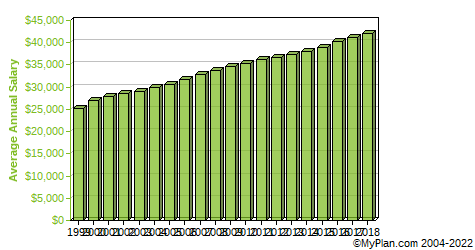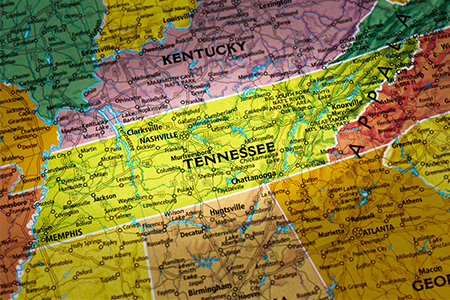
A company ledger, which is a document that records all financial transactions of a company, is what it looks like. These transactions are typically categorized into different accounts to suit different purposes. Each account is a "bucket" of value with different balances. A chart of accounts is a listing of all the accounts within a company's ledger. This chart is used to group all financial transactions that a company makes and specifies the format in which they should be entered.
In a company ledger, accounts
The company's ledger consists of many files. These files show the accounts of a company. Posting transactions refers essentially to the transfer of funds from one account into another account. There are two types, the general and the subsidiary. The general ledger records transactions while the subsidiary ledger groups similar accounts. The overall organization of a company’s general ledger can be improved by consolidating related accounts.
The company's ledger is a comprehensive list of all accounts and balances. The T-accounts are the basic form of the general ledger. This ledger is used to record the activities of all company account.
General ledger
A general ledger is a system that stores financial information for a business. Every transaction in the ledger is associated with a journal entry or source file. An example of a document could be an invoice or a canceled check that shows the receipt and payment of a product or service. Lenders also have the general ledger as a valuable tool. It helps them identify a company's financial status and can provide a paper trail to support an audit.

When creating a budget or calculating accounts receivable turnover, the general ledger is the first place to start. A general ledger can be used to show the balance of a company's bank account or print expense account. Likewise, it can show you if professional service costs are sky-high or if there is a problem with an employee.
Sub-ledgers
The sub-ledgers of a company's overall ledger are included. These subledgers are used to store details about financial transactions. Each sub-ledger may contain many accounts, or only a few. These sub-ledgers may contain only a few accounts, or all of them, depending on accounting conventions.
Businesses will have a better view of their financial health with sub-ledgers. Each sub-ledger account is separated, making it easier to maintain and read the general ledger. An example is that a worker's-comp compensation auditor needs only to review the subledger account for that account.
Cash book
Cash books are a journal that records cash transactions. They can be found in the company's ledger. These transactions are recorded datewise, so errors in entries can easily be identified. Cash books also help in preventing cash fraud. This journal can be kept up-to-date on a regular schedule and used for financial reporting.
A cash book is composed of a credit and debit side. The debit record cash receipts, while cash payments and disbursements can be logged on the credit. The difference between the sides is the current cash balance. A cash book could have one column or two columns.

Dividends account
The Dividends account is one of the many accounts in a company's ledger. This account appears in the Equity section of a company's Balance Sheet report. Dividend payments are recorded in the cash reserves, asset records, and retained earnings of a company. This account has a specific purpose in accounting: to record the company's dividend payments.
Dividends are debited or credited to the Dividends account upon payment to shareholders. Dividend payments are generally made on the date the dividends were approved.
FAQ
Why is reconciliation important
It's important, as mistakes are possible at any moment. Mistakes include incorrect entries, missing entries, duplicate entries, etc.
These problems could have severe consequences, such as incorrect financial statements, missed deadlines or overspending.
What is the average time it takes to become an accountant
Passing the CPA examination is essential to becoming an accountant. Most people who are interested in becoming accountants have studied for at least 4 years before taking the exam.
After passing the test, one must work as an associate for at least 3 consecutive years before becoming a certified professional accountant (CPA).
What does it really mean to reconcile your accounts?
Reconciliation involves comparing two sets of numbers. One set is called the "source," and the other is called the "reconciled."
The source is made up of actual figures. The reconciliation represents the figure that should actually be used.
You could, for example, subtract $50 from $100 if you owe $100 to someone.
This ensures there are no errors in the accounting system.
What is the purpose of accounting?
Accounting is a way to see a financial picture by recording, analyzing and reporting transactions between people. Accounting allows organizations to make informed decisions about how much money they have available to invest, how much they can expect to earn from operations and whether additional capital is needed.
Accountants record transactions in order to provide information about financial activities.
The data collected allows the organization to plan its future business strategy and budget.
It is crucial that the data are accurate and reliable.
What type of training is required to become a Bookkeeper?
Basic math skills such as addition and subtraction, multiplication or division, fractions/percentages, simple algebra, and multiplication are essential for bookkeepers.
They should also know how to use computers.
Most bookkeepers have a high school diploma. Some have even earned college degrees.
Statistics
- Given that over 40% of people in this career field have earned a bachelor's degree, we're listing a bachelor's degree in accounting as step one so you can be competitive in the job market. (yourfreecareertest.com)
- Employment of accountants and auditors is projected to grow four percent through 2029, according to the BLS—a rate of growth that is about average for all occupations nationwide.1 (rasmussen.edu)
- According to the BLS, accounting and auditing professionals reported a 2020 median annual salary of $73,560, which is nearly double that of the national average earnings for all workers.1 (rasmussen.edu)
- In fact, a TD Bank survey polled over 500 U.S. small business owners discovered that bookkeeping is their most hated, with the next most hated task falling a whopping 24% behind. (kpmgspark.com)
- Given that over 40% of people in this career field have earned a bachelor's degree, we're listing a bachelor's degree in accounting as step one so you can be competitive in the job market. (yourfreecareertest.com)
External Links
How To
How to do your bookkeeping
There are many options for accounting software today. While some software is free and some cost money to purchase, many offer basic functions such as billing, invoicing, inventory management, payroll, point-of sale, financial reporting, and processing of payroll. This list will give you a quick overview of some of the most popular accounting packages.
Free Accounting Software: Free accounting software is usually offered for personal use only. While it might not be as functional as you would like (e.g. you cannot create reports), the software is usually very simple to use. Many free programs also allow you to download data directly into spreadsheets, making them useful if you want to analyze your business's numbers yourself.
Paid Accounting Software (PAS): Paid accounts for businesses with multiple workers. These accounts include powerful tools to manage employee records, track sales and expenses, generate reports, and automate processes. While most paid programs require a subscription fee for at least one-year, many companies offer subscriptions that last just six months.
Cloud Accounting Software - Cloud accounting software lets you access your files via the internet from any device, including smartphones and tablets. This program has gained popularity due to the fact that it frees up space on your hard drive, reduces clutter, is easier to use remotely, and also makes work more efficient. You don't even need to install any additional software. You only need an internet connection and a device that can access cloud storage services.
Desktop Accounting Software: Desktop software works in a similar way to cloud accounting software. However, it runs locally on your own computer. Desktop software allows you to access your files anywhere, even via mobile devices, just like cloud software. The only difference is that you will have to install the software first before you can access it.
Mobile Accounting Software: Our mobile accounting software can be used on smartphones and tablets. These programs allow you to manage finances from anywhere. Typically, they provide fewer functions than full-fledged desktop programs, but they're still valuable for people who spend a lot of time traveling or running errands.
Online Accounting Software: This online accounting software is intended primarily for small business. It has all the features of a traditional desktop software package, but with a few additional bells and whistles. Online software does not need to be installed. Just log in and you can start using it. Online software also offers the opportunity to save money as you can avoid local office fees.